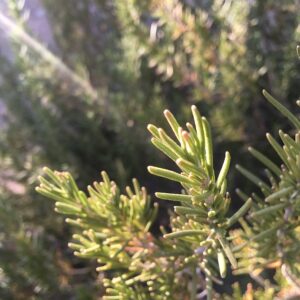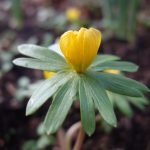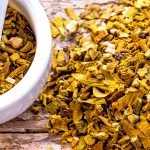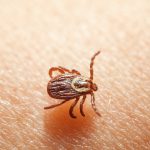Stop and Smell the Rosemary: You Might Remember More
LILLEA HARTWELL, ND, RH (AHG)
The following article is a monograph outlining the basics of Rosmarini aetheroleum essential oil (EO). The definition, synonyms, selected vernacular names, and geographical distribution of Rosmarinus officinalis/Salvia rosmarinus are covered. Characteristics of the oil, as in organoleptic properties, purity tests, and major chemical constituents, are discussed at length. The analysis concludes with a review of its medicinal uses, pharmacology, toxicology, and dosing.
Rosmarini aetheroleum
Definition
Rosmarini aetheroleum is the essential oil of Rosmarinus officinalis (family Lamiaceae)1 or other Rosemary species rich in 1,8-cineole,2 obtained by steam distillation of the plant’s fresh leaves1 when the plant is flowering.3 The chemotype discussed in this monograph, found to increase locomotor activity in animals because of its 1,8-cineole content, is referred to as the chemotype cineole.
Synonyms
Rosemary
Selected Vernacular Names
Rosmarinöl, Oleum Rosmarini2
Geographical Distribution
Rosemary is native to the Mediterranean,4 but it is cultivated worldwide.1 The chemotype cineole, which has the highest concentrations of eucalyptol, comes from France, Spain, and Morocco.5 This plant grows best in a climate that ranges from warm to hot.6 Specific prosperous growing conditions include full sun6 and by the seashore.4
Description
Rosemary is an evergreen shrub4 with basal branches of whorled leaf venation that tends to grow in well-draining soils.6 The plant has dark-green leaves with smooth margins and prominent central veins.4 The leaves have white undersides.4 In April and May, pale blue or white flowers can be seen on the plant, although in climates with colder temperatures, the blooms may appear later.4
Plant Material of Interest: Essential Oil
General Appearance
Figure 1. Rosmarinus officinalis

Organoleptic Properties
Rosmarini aetheroleum is aromatic and has a transparent clarity.3 Meta-analyses and experiments performed on samples from various geographic locations across the world suggest 5 chemotypes: 1) α-pinene/1,8-cineole; 2) verbenone/α-pinene/camphor/1,8-cineole; 3) myrcene/1,8-cineole/camphor; 4) 1,8-cineole/camphor/α-pinene; and 5) α-pinene/β-pinene/ camphene.3
General Identity Tests
Purity tests
- Microbiological: Rosmarini aetheroleum has antimicrobial activity1,3
- Chemical: The essential oil of rosemary has anti-inflammatory activity in the lung1
Major Chemical Constituents
Different chemotypes of rosemary arise from different growing conditions.5 The camphor chemotype, for example, is influenced largely by having less access to sunlight and warmer temperatures.5 Major chemical constituents of the species include carnosol, rosmanol, ursolic acid,2 and rosmarinic acid.7 The major chemical constituent in the cineole chemotype is 1,8-cineole, making up 19-32% of the plant.5 Other major chemical components include borneol (3-6%), camphor (13-24%), verbenone (0.4-4%), and limonene (4-8%), which all have their own chemotype when in the majority.3,5
Rosemary also contains vitamins A and C, calcium, iron, phosphorous, magnesium, potassium, sodium, and zinc.8 Linalool is reported as a large chemical constituent of rosemary.9 Additional chemical constituents of the aetheroleum include verbenol, terpineol, 3-octanone, isobonyl acetate,1 and other monoterpene hydrocarbons. Examples of those monoterpene hydrocarbons, besides those listed as the chemotype determinants, include α- and β-pinenes,1 but these are more prevalent in another species of Rosemary (Rosmarinus pyramidalis), which is not a focus of this article.5
Medicinal Uses
Uses Supported by Clinical & Experimental Data
The studious members of the ancient Greeks donned themselves in rosemary to “strengthen their memories” when trying to master material for tests.4 In quite a few studies since then, rosemary has been shown to be useful in increasing memory and consequent retention of information. The focus of this monograph is solely the role of the plant’s aroma, as opposed to any other plant material use, although there is a significant amount of research on oral medicinal applications of other plant material harvested from rosemary, such as enhancement of cognitive ability. In 1987, a group led by Kovar et al studied the effect of rosemary oil in mice. They observed that the inhalation and ingestion of Rosmarini aetheroleum produced increased locomotor activity in the animals, which was associated with 1,8-cineole, a major chemical constituent of the oil.10 This study implied a direct response by the central nervous system in the presence of 1,8-cineole. In 1988, a book was published about the effects of fragrance on humans, which described how the smell of rosemary has stimulant properties.11
In another study, 40 adults were given 3 doses of rosemary and lavender aromatherapy, and were asked to complete math problems before and after their doses.12 Two self-reporting measures were employed for the subjects to rate their depression (POMS) and anxiety (STAI).12 Those treated with Rosamarini atheroleum had decreased frontal alpha and beta power, believed to be an indication of increased alertness.12 In addition to changes in brain activity, they claimed to be more at ease and alert, less anxious, and were faster at completing math computations after exposure to aromatherapy.12 The study participants’ feedback suggested that rosemary produces positive results when the method of application is inhalation.12
Additional studies, primarily written by the same group, corroborate rosemary’s memory-enhancing properties. In 2002, in an experiment led by Moss et al, inhaling the smell of rosemary helped improve immediate word recall, spatial memory reaction time, working memory reaction time, and word recognition reaction time, though not accuracy, when compared to a control group.9 In addition, participants experienced an increase in alertness and contentedness.9 The study concluded that working memory and long-term memory improve with rosemary aromatherapy.9
In a 2012 study, Moss and Oliver used 1,8-cineole, the active compound in rosemary cineole chemotype, in an isolated serum.7 Following aromatherapy, the chemical constituent was present in the subjects’ blood, demonstrating that the body absorbed the oil through the air or nasal passages.7 McCaffrey et al observed similar results in nursing students.13 Some studies attribute the benefit in cognition to acetylcholinesterase inhibition.14 While this monograph focuses on essential oil components of the plant, multiple studies have found benefit from the whole plant on cognitive dysfunction, traumatic brain injury, Parkinson’s disease, and short-term memory enhancement in humans of varying ages.15,16
The historically referenced disinfectant properties17 of rosemary have been confirmed through antimicrobial, antioxidant,1 antiseptic, antibacterial, and anti-inflammatory18 properties.
Uses Described in Pharmacopeias & Traditional Systems of Medicine
Rosemary oil has often been used to impart fragrance to soap, detergent, cream, lotion, perfume,1 and shampoo.4
Uses Described in Folk Medicine, Not Supported by Experimental or Clinical Data
Rosemary has been associated with fidelity and was consequently used traditionally in marriages.17 There have been many additional legendary attributes associated with the smell of rosemary that have yet to be proven, including the ability to “repel evil spirits and bad dreams,” “keep a person young,” and to work as a “love charm.”4 These properties have yet to be supported by scientific experimental or clinical data.
Pharmacology
Experimental & Clinical
Rosmarini aetheroleum is antispasmodic and increases blood flow through the coronary artery,2 which has an overall calming effect.
Toxicology/ Clinical Pharmacology
The oil has been shown to irritate rabbit skin1 and human skin,2 but this seems to vary by individual.1
Contraindications
None known2,19
Drug Interactions
None known2,19
Side Effects
None known2,19
Cautions
Do not consume more than 1 mL at a time, as this increases the risk of poisoning.2,4 Pregnant or lactating women should not use Rosmarini aetheroleum medicinally.2,4,14,19,20
Dosage, Forms, & Posology
Two drops (equivalent to 1 mL) of Rosmarini aetheroleum can be taken internally every day.2 The essential oil can be taken for “dyspeptic complaints,” ie, complaints of indigestion, depression, and irritability.2
For external use, Rosmarini aetheroleum should be in a semi-solid or liquid preparation consisting of between 5% and 10% essential oil.2 It is also widely used for relief from rheumatic diseases and for circulatory problems.2,21 When used externally, the oil stimulates blood flow.2
Note: The essential oil should be stored in a dark container, away from heat and light.14
Conclusions
The Mediterranean plant Rosmarinus officinalis, now acknowledged as Salvia rosmarinus, can be processed into an essential oil. The oil is not harmful in terms of side effects, drug interactions, and contraindications. The aromatherapeutic oil contains many chemical constituents associated with positive human functioning, including killing tumors, bacteria, and viruses. Rosmarini aetheroleum has also been correlated with positive brain activity. Since inhaling the smell of rosemary can sharpen memory and increase retention in humans, students might consider using it to heighten their cognitive ability during scholastics. It may prove useful in early-onset dementia and other neurological disorders such as Alzheimer’s disease and Parkinson’s disease.
References:
- Khan IA, Abourashed EA. Leung’s Encyclopedia of Common Natural Ingredients: Used in Food, Drugs, and Cosmetics. 3rd ed. Hoboken, NJ; John Wiley & Sons, Inc; 2010.
- Blumenthal M, Busse W, Goldberg A, et al. The Complete German Commission E Monographs: Therapeutic Guide to Herbal Medicines. Austin, TX: American Botanical Council; 1998.
- Satyal P, Jones TH, Lopez EM, et al. Chemotypic Characterization and Biological Activity of Rosmarinus officinalis. Foods. 2017;6(3):20.
- Lust J. The Herb Book. 16th ed. New York, NY: Bantam Books; 1983.
- Rose J. 375 Essential Oils and Hydrosols. Berkeley, CA: North Atlantic Books; 1999.
- Eyre SN, ed. Sunset: National Garden Book. Menlo Park, CA: Sunset Books Inc; 1997.
- Moss M, Oliver L. Plasma 1,8-cineole correlates with cognitive performance following exposure to rosemary essential oil aroma. Ther Adv Psychopharmacol. 2012;2(3):103-113.
- Tenney L. Today’s Herbal Health. 3rd ed. Provo, UT: Woodland Books; 1992.
- Moss M, Cook J, Wesnes K, Duckett P. Aromas of rosemary and lavender essential oils differentially affect cognition and mood in healthy adults. Int J Neurosci. 2003;113(1):15-38.
- Kovar KA, Gropper B, Friess D, Ammon HP. Blood levels of 1,8-cineole and locomotor activity of mice after inhalation and oral administration of rosemary oil. Planta Med. 1987;53(4):315-318.
- van Toller S. Emotion and the brain. In: van Toller S, Dodd GH, (eds). Perfumery: The Psychology and Biology of Fragrance. London, England: Chapman & Hall; 1988:121-143.
- Diego MA, Jones N, Field T, et al. Aromatherapy positively affects mood, EEG patterns of alertness and math computations. Int J Neurosci. 1998;96(3-4):217-224.
- McCaffrey R, Thomas DJ, Kinzelman AO. The effects of lavender and rosemary essential oils on test-taking anxiety among graduate nursing students. Holist Nurs Pract. 2009;23(2):88-93.
- Kane CW. Herbal Medicine: Trends and Traditions. Lincoln Town Press; 2009.
- Pengelly A, Snow J, Mills SY, et al. Short-term study on the effects of rosemary on cognitive function in an elderly population. J Med Food. 2012;15(1):10-17.
- Rodriguez-Sánchez JM, Crespo-Facorro B, González-Blanch C, et al. Cognitive dysfunction in first-episode psychosis: the processing speedy hypothesis. Br J Psychiatry Suppl. 2007;51:s107-s110.
- Sunset. Herbs: An Illustrated Guide. Menlo Park, CA: Sunset Publishing Co; 1995.
- Craig WJ. Rosemary: a mint by any other name. Vibrant Life. 2005;21:20-21. Available at: https://www.vibrantlife.com/rosemary/. Accessed April 14, 2015.
- Gaby AR. A-Z Guide to Drug-Herb-Vitamin Interactions. 2nd ed. Easton, PA: Harmony Press; 2006:145.
- Mills S, Bone K. The Essential Guide to Herbal Safety. St Louis, MO: Churchill Livingstone; 2005.
- Tilgner S. Herbal Medicine: From the Heart of the Earth. 2nd ed. Wise Acres Publishing; 2009:439.

Lillea Hartwell, ND, RH (AHG) is a graduate of Southwest College of Naturopathic Medicine. She obtained a BS in Plant Sciences, with a minor in Environmental Sciences at the University of Arizona. Dr Hartwell has earned the distinction of Registered Herbalist with the American Herbalists Guild. She teaches at the college level and practices medicine at her private practice, Saguaro Blossom Medical Center, in the Phoenix Valley. Dr Hartwell has a passion for general medicine, especially in urgent care settings like wound care and minor surgery, as well as rheumatology and other autoimmune conditions. For more information, visit drlilleahartwell.com.










